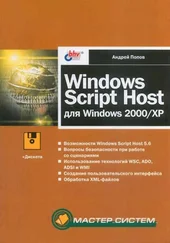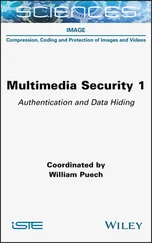4.Select a disk in the Selected list, and then specify the size of the volume on the disk in the Select The Amount Of Space In MB box. The Maximum Available Space In MB box shows you the largest area of free space available on the disk. The Total Volume Size In Megabytes box shows you the total disk space selected for use with the volume. Tap or click Next.
TIP Although you can size a volume set any way you want, consider how you’ll use volume sets on the system. Simple and spanned volumes aren’t fault tolerant; rather than creating one monstrous volume with all the available free space, you might want to create several smaller volumes to help ensure that losing one volume doesn’t mean losing all your data.
5.Specify whether you want to assign a drive letter or path to the volume, and then tap or click Next. You use the available options as follows:
■ Assign The Following Drive LetterTo assign a drive letter, choose this option, and then select an available drive letter in the list provided.
■ Mount In The Following Empty NTFS FolderTo assign a drive path, choose this option, and then type the path to an existing folder on an NTFS drive, or tap or click Browse to search for or create a folder.
■ Do Not Assign A Drive Letter Or Drive PathTo create the volume without assigning a drive letter or path, choose this option. You can assign a drive letter or path later if necessary.
6.Specify whether the volume should be formatted. If you elect to format the volume, set the following formatting options:
■ File SystemSpecifies the file system type, such as NTFS or ReFS.
■ Allocation Unit SizeSpecifies the cluster size for the file system. This is the basic unit in which disk space is allocated. The default allocation unit size is based on the volume’s size and is set dynamically prior to formatting. Although you can’t change the default size if you select ReFS, you can set the allocation unit size to a specific value with other formats. If you use a lot of small files, you might want to use a smaller cluster size, such as 512 or 1,024 bytes. With these settings, small files use less disk space.
■ Volume LabelSpecifies a text label for the partition. This label is the partition’s volume name.
■ Perform A Quick FormatTells Windows to format without checking the partition for errors. With large partitions, this option can save you a few minutes. However, it’s more prudent to check for errors, which allows Disk Management to mark bad sectors on the disk and lock them out.
■ Enable File And Folder CompressionTurns on compression for the disk. Compression is transparent to users, and compressed files can be accessed just like regular files. If you select this option, files and directories on this drive are compressed automatically. For more information about compressing drives, files, and directories, see “Compressing drives and data” in Chapter 1. (For NTFS only)
7.Tap or click Next, and then tap or click Finish.
Deleting volumes and volume sets
You use the same technique to delete all volumes, whether they’re simple, spanned, mirrored, striped, or RAID-5 (striped with parity). Deleting a volume set removes the associated file system, and all associated data is lost. Before you delete a volume set, you should back up any files and directories the volume set contains.
You can’t delete a volume that contains the system, boot, or active paging files for Windows Server 2012 R2.
To delete volumes, follow these steps:
1.In Disk Management, press and hold or right-click any volume in the set, and then tap or click Delete Volume. You can’t delete a portion of a spanned volume without deleting the entire volume.
2.Tap or click Yes to confirm that you want to delete the volume.
You manage volumes much like you manage partitions. Follow the techniques outlined in “Managing existing partitions and drives” later in this chapter.
Improving performance and fault tolerance with RAID

You’ll often want to give important data increased protection from drive failures. To do this, you can use RAID technology to add fault tolerance to your file systems. With RAID, you increase data integrity and availability by creating redundant copies of the data. You can also use RAID to improve your disks’ performance.
Different implementations of RAID technology are available, and these implementations are described in terms of levels. Each RAID level offers different features.
Windows Server 2012 R2 supports RAID levels 0, 1, and 5. You can use RAID-0 to improve the performance of your drives, and you use RAID-1 and RAID-5 to provide fault tolerance for data.
Table 2–2 provides a brief overview of the supported RAID levels. This support is completely software-based.
The most common RAID levels in use on servers running Windows Server 2012 R2 are level 1 (disk mirroring), and level 5 (disk striping with parity). With respect to upfront costs, disk mirroring is the least expensive way to increase data protection with redundancy. Here, you use two identically sized volumes on two different drives to create a redundant data set. If one of the drives fails, you can still obtain the data from the other drive.
However, disk striping with parity requires more disks — a minimum of three — but offers fault tolerance with less overhead than disk mirroring. If any of the drives fail, you can recover the data by combining blocks of data on the remaining disks with a parity record. Parity is a method of error checking that uses an exclusive OR operation to create a checksum for each block of data written to the disk. This checksum is used to recover data in case of failure.
TABLE 2–2Windows Server 2012 R2 support for RAID
| RAID LEVEL |
RAID TYPE |
DESCRIPTION |
MAJOR ADVANTAGES |
| 0 |
Disk striping |
Add the disks that contain the rest of the spanned volumes, and then import all the disks at one time. |
Speed and performance. |
| 1 |
Disk mirroring |
Two volumes on two drives are configured identically. Data is written to both drives. If one drive fails, no data loss occurs because the other drive contains the data. (This level doesn’t include disk striping.) |
Redundancy. Better write performance than disk striping with parity. |
| 5 |
Disk striping with parity |
Uses three or more volumes, each on a separate drive, to create a striped set with parity error checking. In the case of failure, data can be recovered. |
Fault tolerance with less overhead than mirroring. Better read performance than disk mirroring. |
REAL WORLD Although it’s true that the upfront costs for mirroring should be less than the upfront costs for disk striping with parity, the actual cost per gigabyte might be higher with disk mirroring. With disk mirroring, you have an overhead of 50 percent. For example, if you mirror two 750-gigabyte (GB) drives (a total storage space of 1500 GB), the usable space is only 750 GB. With disk striping with parity, on though, you have an overhead of around 33 percent. For example, if you create a RAID-5 set by using three 500-GB drives (a total storage space of 1500 GB), the usable space (with one-third lost for overhead) is 1,000 GB.
Читать дальше







